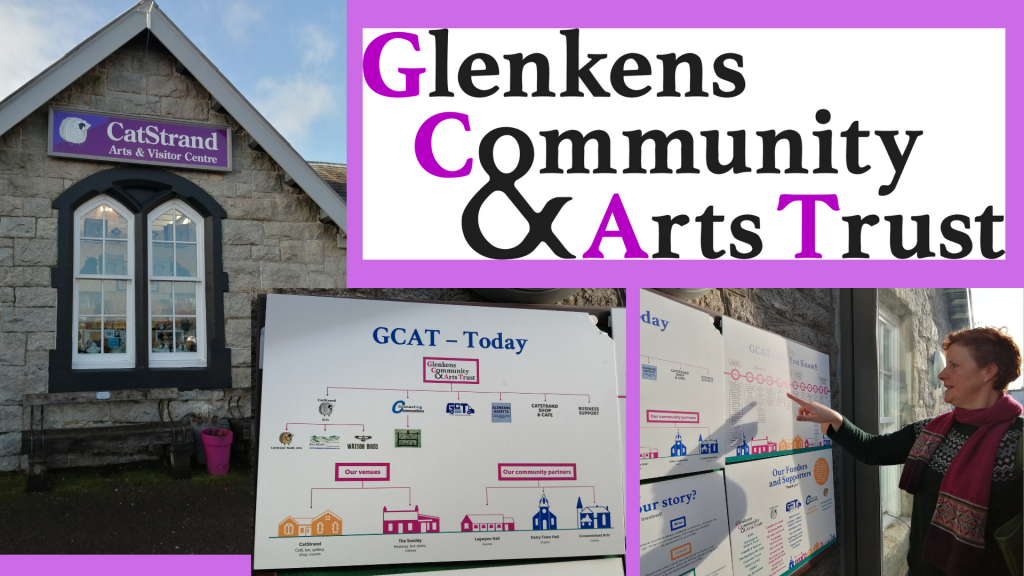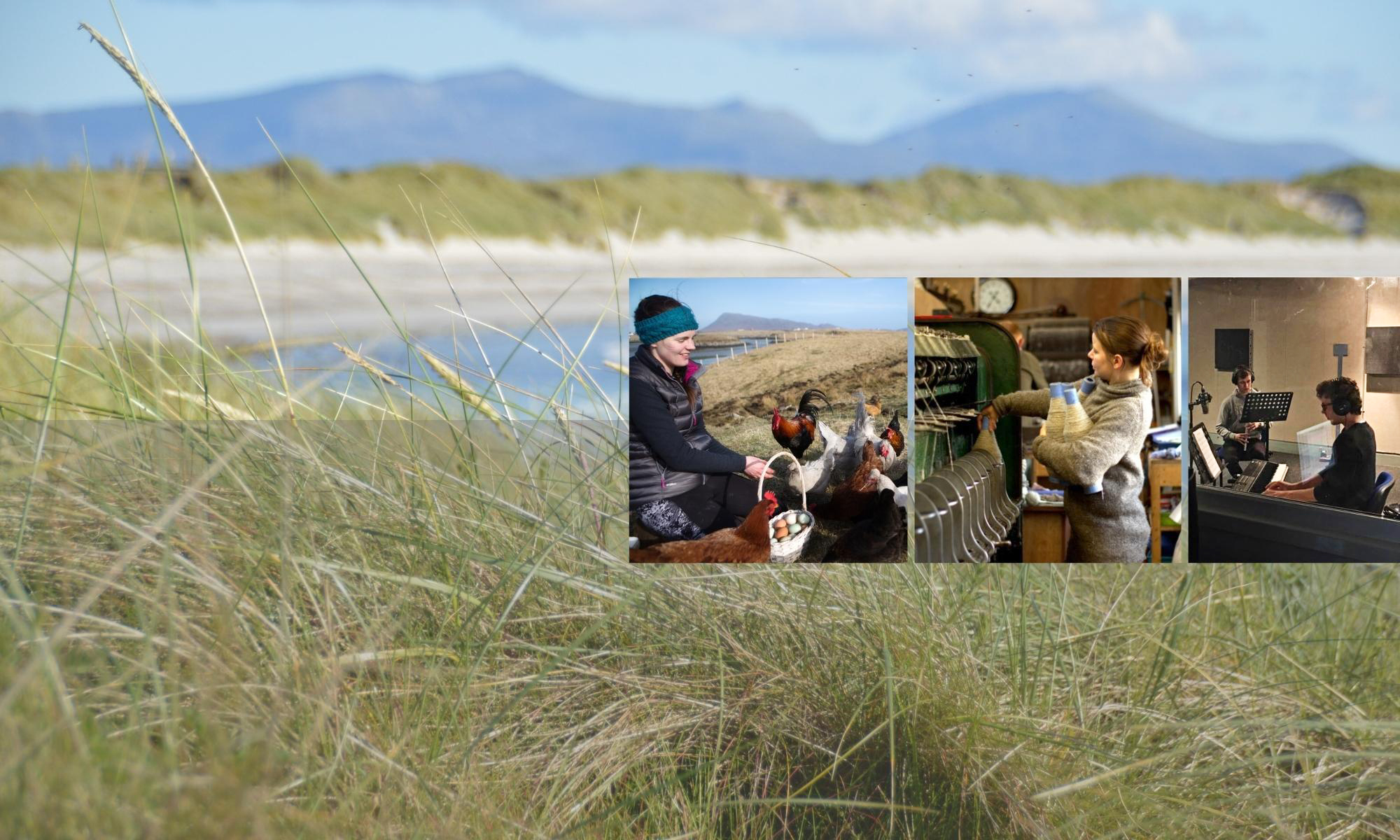“We are a forested area, a farming area, an energy generation area. We are a watery area, given life by our rivers and lochs. Our natural environment is so special that we are part of the Galloway and Southern Ayrshire UNESCO Biosphere. Our landscapes attract visitors from all over the world. We are a peaty area and our soil stores some of Scotland’s best carbon. It is our home, where we work, live and play.”
So opens “A Vision for Land Use in the Glenkens”, demonstrating just how asset rich our rural and island communities are. And the wealth of community energy, from volunteering to long established organisations, was so evident when we visited the Glenkens at the end of January 2024, to see and hear about the Glenkens Community and Arts Trust and the Glenkens & District Community Action Plan (CAP), the Galloway Food Hub and Bairn Banter.

We heard how community action in the Glenkens, rooted in decades of practice, is becoming increasingly organised and ambitious. The Community Action Plan, published in September 2020 after significant community consultation, engages with four key themes:
- A Connected Community
- An Asset Rich Community
- An Economically Flourishing Community
- A Carbon Neutral Community.
And the community is clearly well organised with three closely connected but distinct voluntary entities that ensure delivery and accountability:
- The Glenkens & District Trust builds the available funding pot through effective liaison with wind farm (and other) developers and administers the funds effectively and transparently. Membership is drawn from Community Councils.
- The Community Action Plan Steering Group, a non-incorporated body, owns the Community Action Plan (CAP), keeps it relevant and prioritises delivery. Membership is drawn from across the area.
- The Glenkens Community and Arts Trust, the local anchor organisation, has the mandate to lead on delivery of the CAP, which it does through a strategy of direct delivery, supporting other local organisations, such as the Galloway Food Hub, and creating regional and national partnerships.
“The Glenkens and district Community Action Plan (CAP) clearly maps onto regional and national priorities. We think the delivery model for this CAP is a case study in how to plug the gap between national policy and action on the ground in a remote-rural community. However, a lack of regional partnership working and core revenue support is hampering our efforts to make this happen. Communities should be viewed as key strategic partners in delivering ScotGov priorities efficiently and effectively – but need to be valued and resourced as such.”
Helen Keron, GCAT Executive Manager
The Community Action Plan aligns very clearly with regional and national strategies such as the South of Scotland Regional Economic Strategy, the Dumfries and Galloway Local Outcomes Improvement Plan and Scottish Government priorities of tackling poverty, ensuring a just transition and building a wellbeing economy. The Glenkens have created a model of effective delivery of regional and national priorities within so-called remote rural communities that could be shared across the country.
GCAT is developing pilot projects with local and regional partners around innovative housing solutions, community transport and energy efficiency in public buildings. But they are keen to do more, in order to embed the principles of Community Wealth Building across their area and beyond.

The Glenkens is fortunate to have access to resources from windfarm developments in the area, currently standing at about £280,000 a year across 8 Community Councils. If this increases further, local communities will be able to prepare for more ambitious local action. This demonstrates the potential for local sustainable development resourced through income from local assets. Well-engaged locally-driven strategic development is key for meeting the needs of the community. As is enabling communities to gain more of the returns on local assets, such as renewable energy (see here).
A large threat to the sustainability and prosperity of the Glenkens is rapid land use change. CoDeL and GCAT first connected through a ScotGov / SOSE programme around land use, through which we discovered how existential some of the threats to local communities are. They are being driven by well meaning but misguided policy interventions in response to the climate emergency. We will reflect more on the outcomes of our project on community voices and natural capital in another blog.
Nevertheless, a two-hour drive around the area brought these realities into stark focus. Huge areas are being planted over by trees, driven by the latest iteration of susbsidies, in this case carbon offsetting and timber production. The densely packed trees we saw are of questionable benefit to the climate and biodiversity and take out of action so much good land that could be used for sustainable and regenerative farming; the Glenkens has for generations supported livestock farming.
We felt the grief within the community for farmers who had farmed their land for generations feeling that they have no option but to sell up and bury their land under trees which will so damage the productivity of the land. And for the loss of key landmarks and meaningful places for local communities. As our host reflected, how would Edinburgh residents feel if Arthur’s Seat were suddenly fenced off and disappeared under a densely packed forest of spruce in order to meet national planting targets? But apparently Waterside Hill in the Glenkens does not deserve any such consideration and is now planted – a very visual reminder of the lack of community voice in land use change at present.
For a full casestudy on community action in Glenkens see here. We thank all our partners, and the funder Scottish Rural Network, in this project on “Community Actions in Uist & Glenkens”. The views expressed in this blog post are our own.


